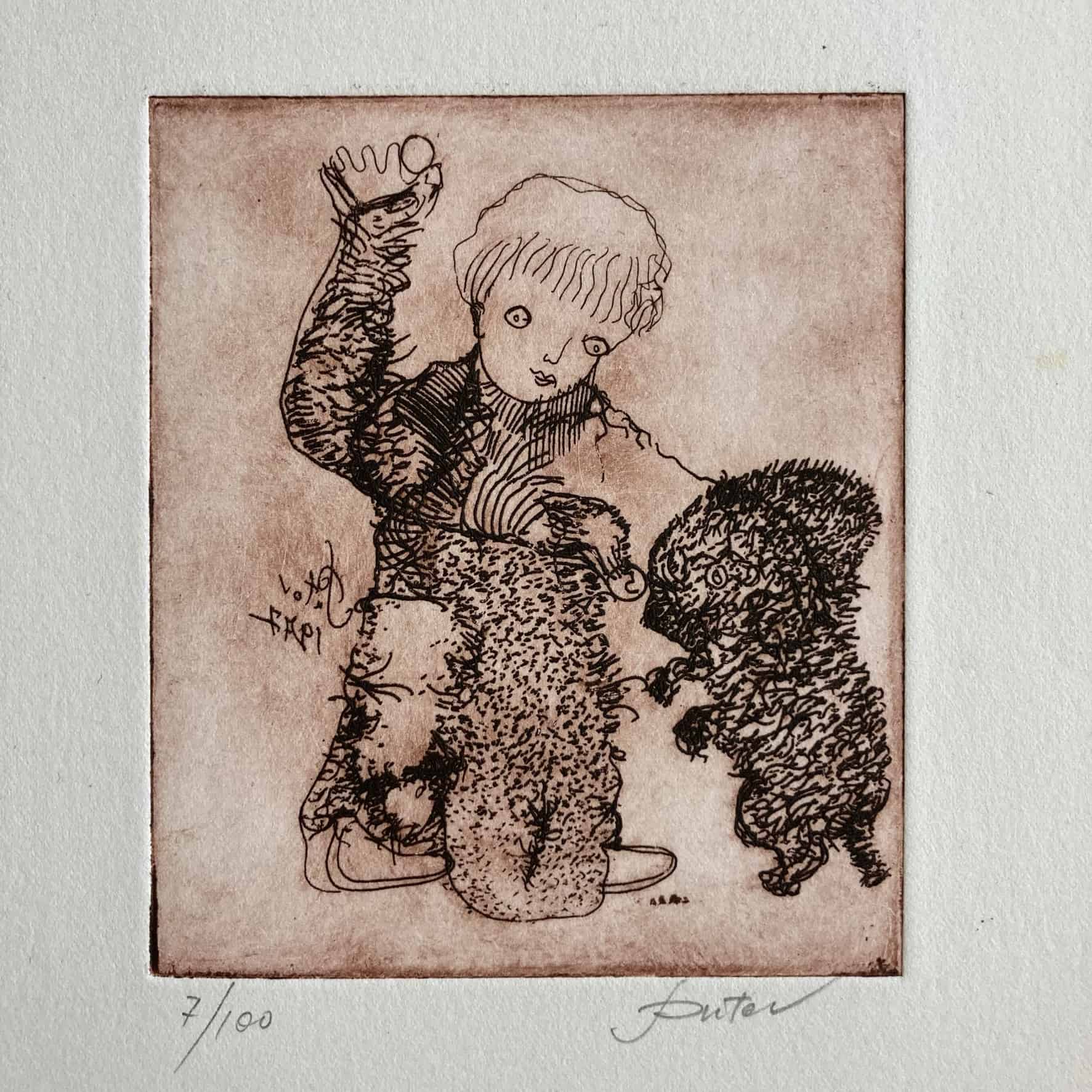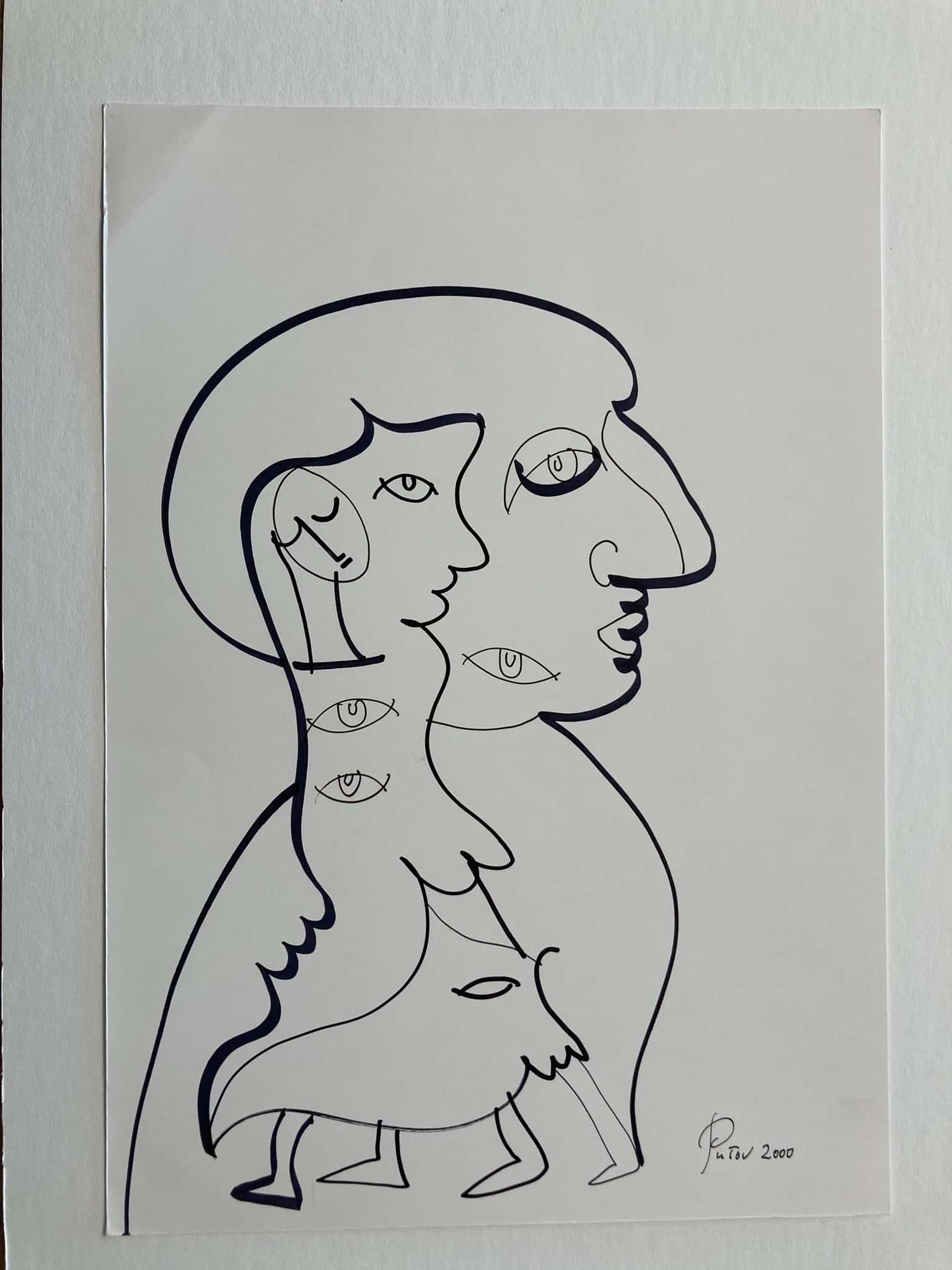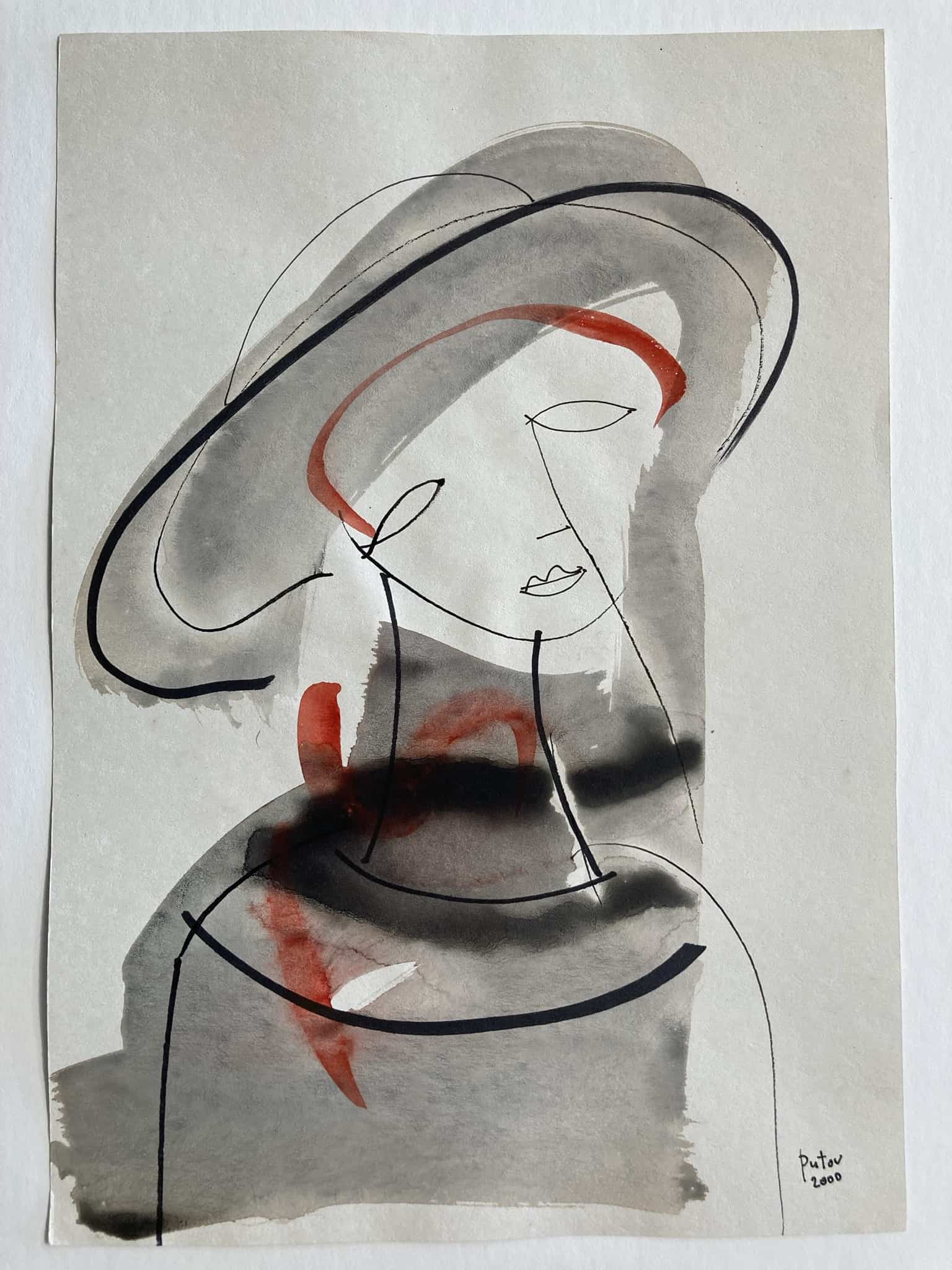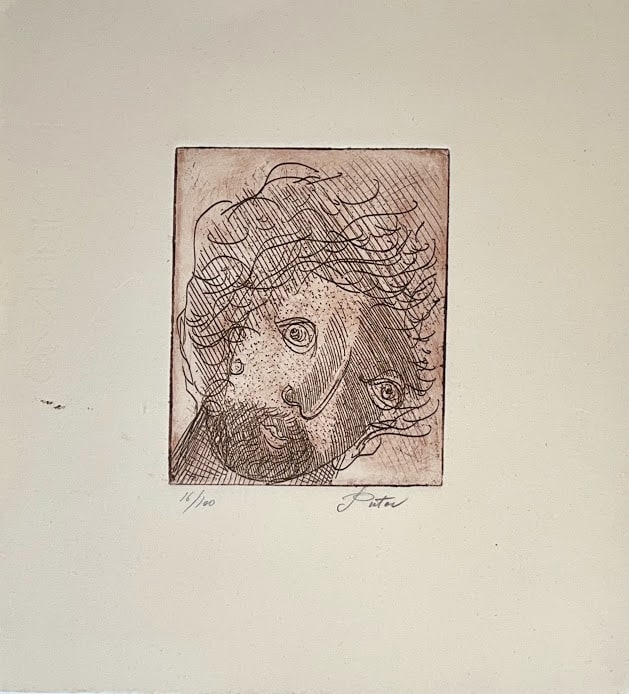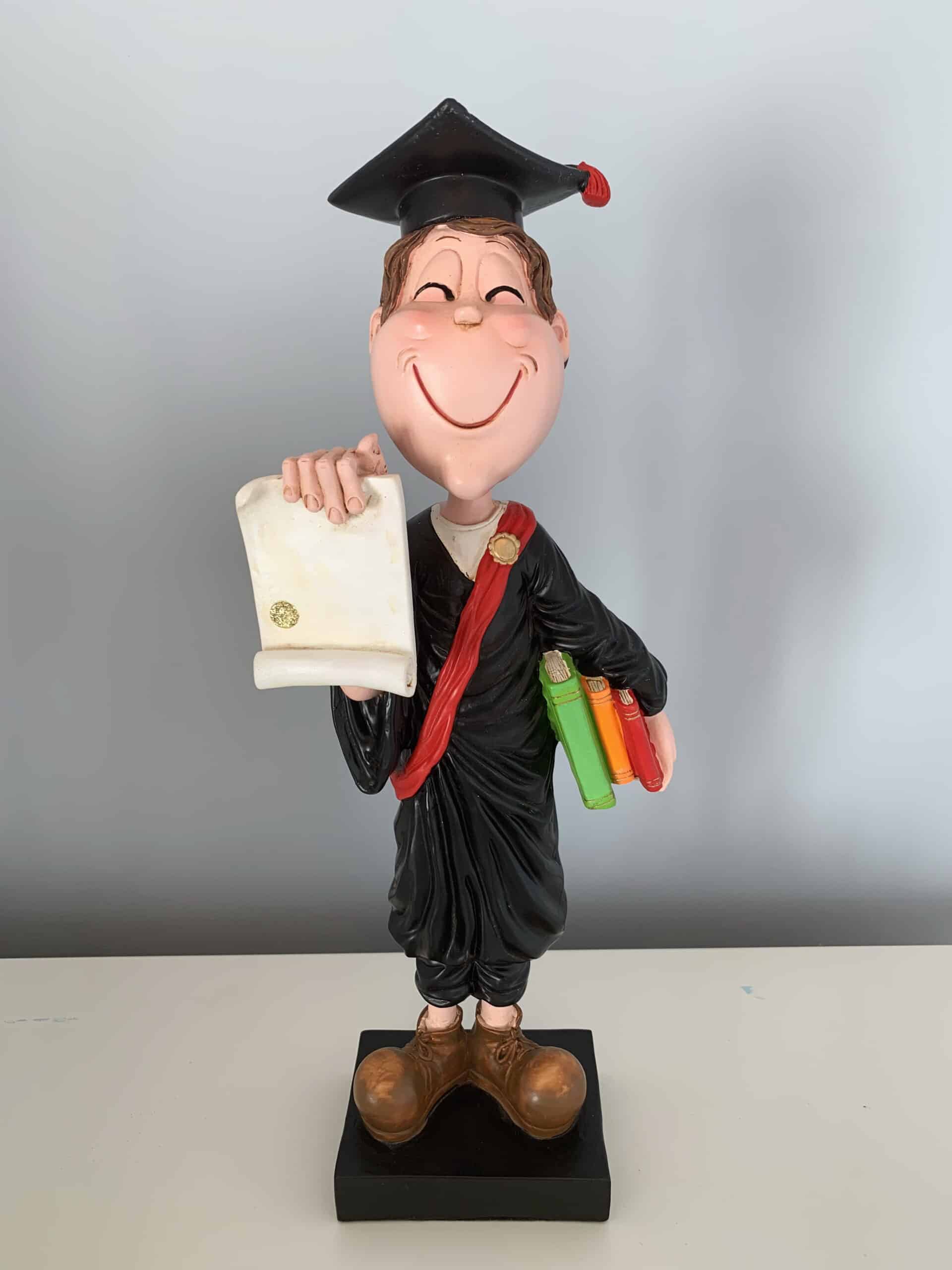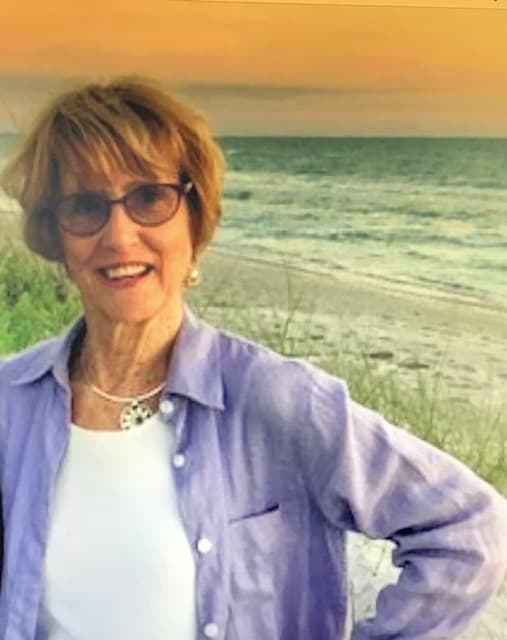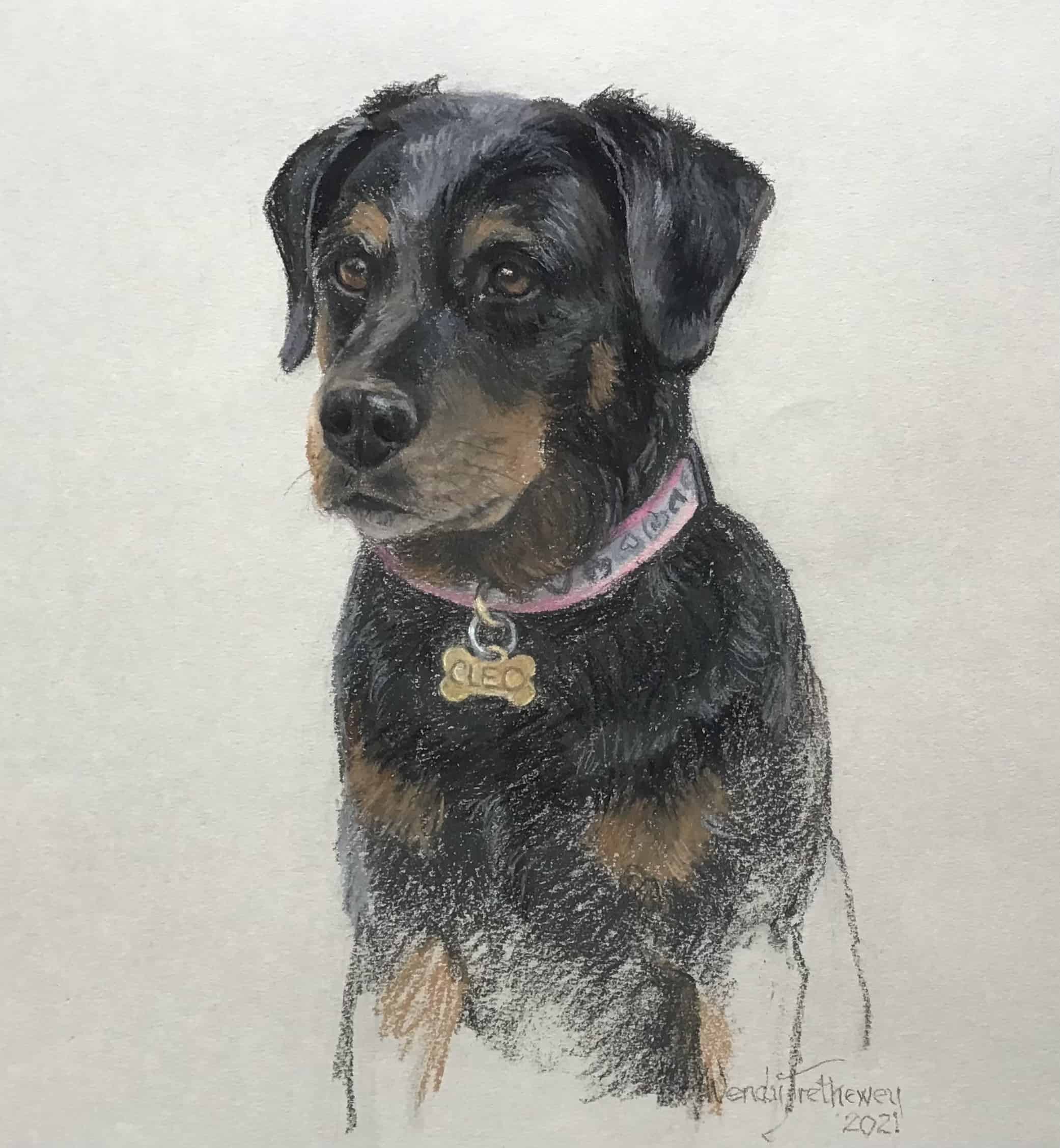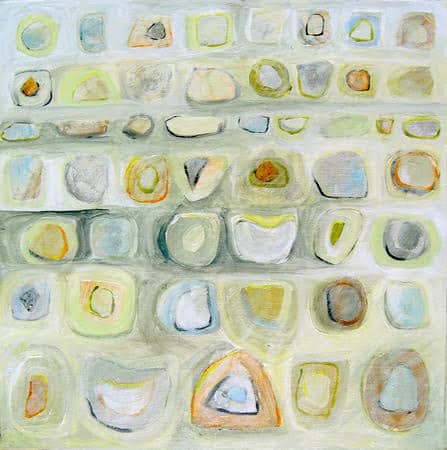
Born in Saint-Hyacinthe, Quebec in 1957, Sylvie Cloutier has been involved in the arts for many years. She holds a certificate in “Arts d’Impression” (impressionist art) from UQAM, a Fine Arts degree from Concordia University, as well as a diploma from Université de Montréal in Sciences and Education. She has been vigorously pursuing her artistic research for more than 30 years, always working to improve and refine the unique characteristics of her abstract works. Today, the artist shares her passion for art with others through teaching. Drawing inspiration from artists such as Kadinsky, Klee, Pollock, Riopelle and Braque, Cloutier uses both a geometrical and a lyrical approach to her art. Her pieces offer extensive fluidity, conveying the sense of having well controlled “body language.” Often executed on blocks of wood, toile or paper, her work is original and creative. Contrasting vibrant pigment with subtle soft mid-tones and utilizing an array of texture, her pieces are guided by simple forms while various layers force the observers’ gaze to dive beyond the surface to see what lays underneath.
Although Cloutier relies on the impulse of spontaneity while creating, her artistic instinct is the trait that gives her works of art life. While viewers may find some abstract works to be cold and difficult to connect with, Cloutier’s works offer a great number of possible starting points to guide and draw the observer in, all while facilitating analysis.














